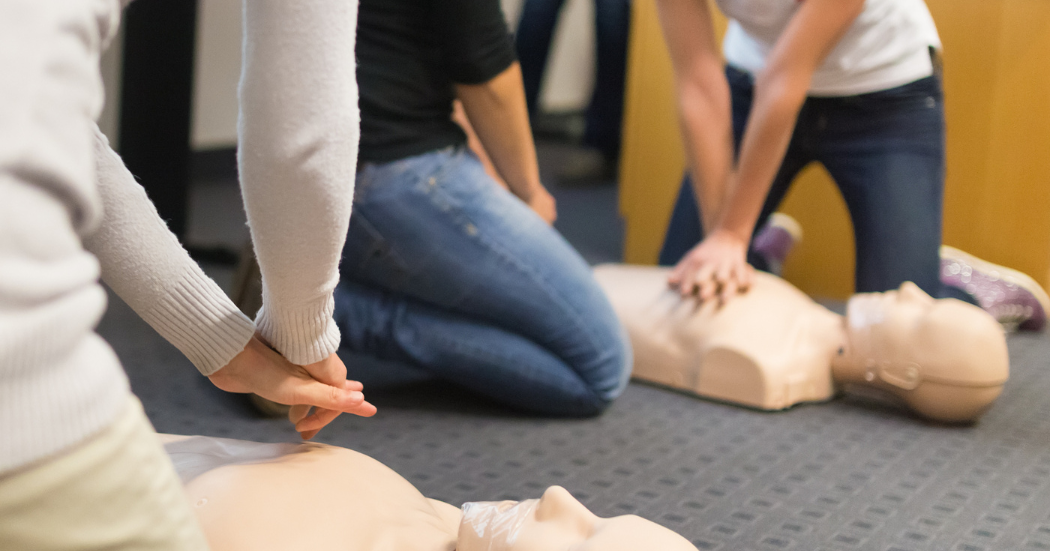Achieving CPR certification empowers you to respond effectively in life-saving situations. The certification process includes a written test and a practical skills exam to ensure candidates have mastered the essential skills. This article offers a comprehensive guide to help you excel in both components of the CPR certification exam.
Understanding the CPR Certification Exam Structure
The CPR certification exam consists of two parts. The written test typically features 25 multiple-choice questions covering the theoretical aspects of CPR. The practical skills test involves performing CPR on a manikin, where you must demonstrate the correct technique, including proper hand placement, compression depth, and rhythm.
At Bayside CPR, we offer a 100% passing rate guarantee, or you can take the class and test again for free.
Written Test
The written portion of the CPR certification exam is designed to evaluate your theoretical knowledge of CPR practices. This test typically consists of approximately 25 multiple-choice questions derived from the material covered throughout the training course.
These questions assess your understanding of essential CPR techniques, including when CPR is necessary and the specific methods for adults, children, and infants. The questions often present hypothetical scenarios that test your ability to apply CPR knowledge in potential real-life emergencies.
This approach ensures that candidates memorize procedures and understand how to implement them when needed.
To excel in the written test, candidates should study the comprehensive guidelines provided by recognized CPR certification bodies such as the American Heart Association or the Red Cross.
Understanding the underpinnings of CPR procedures, such as the rationale behind compression depths and the timing of rescue breaths, is crucial. The exam aims to confirm that a candidate can quickly and accurately make emergency decisions, applying their theoretical knowledge to save lives.
Skills Test
The skills test in the CPR certification exam is designed to demonstrate your practical ability to perform CPR effectively. This critical part of the exam involves performing CPR on a manikin under the observation of an examiner. Here are the essential aspects of CPR that are assessed during the skills test:
- Correct Hand Placement: Ensuring your hands are correctly positioned on the manikin to simulate effective chest compressions.
- Adequate Compression Depth: Checking that compressions are deep enough to be effective but not so deep as to cause injury.
- Proper Compression Rate: Maintaining the correct tempo for compressions to optimize blood flow without causing fatigue too quickly.
- Effective Rescue Breathing: Demonstrating the ability to provide rescue breaths that are neither too strong nor too weak, ensuring enough air enters the lungs.
Preparation for this practical evaluation should focus on the following:
- Extensive Practice: Regular and thorough practice sessions on a CPR manikin, ideally in a classroom setting or through guided sessions to ensure correct technique.
- Handling Pressure: Developing the capability to perform under pressure, reflecting actual emergency conditions.
In addition, your ability to move fluidly through the steps of CPR is assessed:
- Checking the patient’s responsiveness.
- Calling for help.
- Performing chest compressions and delivering rescue breaths.
- Using an Automated External Defibrillator (AED).
Each component is rigorously evaluated to ensure that each candidate can handle real-life emergencies effectively. Mastering these skills through hands-on experience is crucial to ensure you can deliver life-saving care when it matters most.
Tips for Mastering the Written CPR Exam
Engaging in thorough preparation is key to ensuring success in the written portion of your CPR exam. Start by taking online practice tests, which simulate the exam environment and help identify areas where your understanding may be lacking. Enrolling in an online CPR course can also be beneficial, especially for those who need a comprehensive review of CPR theory.
Watching videos from certified professionals can help reinforce the material visually, aiding in the retention and understanding of complex concepts.
Regular review sessions are crucial. These sessions can involve practicing with a CPR manikin or rehearsing the steps mentally to ensure they become second nature. If uncertainties arise, contacting your CPR instructor can be incredibly helpful.
A review session or mock exam can boost your confidence and clarify doubts.
Preparing for the Skills Test
Consistent practice is vital for the practical exam. Regularly practicing on a CPR dummy will help perfect your technique, ensuring you meet the required hand positioning and compression force standards. It’s also beneficial to mentally visualize the CPR process regularly, which enhances muscle memory and response times.
During the exam, it is crucial to maintain calm and focus on the techniques you’ve practiced. Your confidence and ability to stay composed under observation will significantly influence your performance.
What if You Don’t Pass?
If you do not pass the written CPR exam—typically requiring at least an 84% score—it’s essential not to get discouraged. You can retake the test. This opportunity should be used to focus your studies on areas of weakness identified during the first attempt.
Have questions about the CPR exam? We’re here to help! Contact us here.


Leave a Reply